View in other NatureServe Network Field Guides
NatureServe
Montana
Utah
Wyoming
Idaho
Wisconsin
British Columbia
South Carolina
Yukon
California
New York
Columbia Lily - Lilium columbianum
State Rank Reason (see State Rank above)
Lilium columbianum is currently only known from Lincoln County, where six locations have been documented in the 1970's and 1980's. This species is vulnerable to extirpation in Montana because its attractiveness, potential to be over-collected, and limited range. Native lilies have rarely survived in gardens. Current information on known locations is greatly needed.
- Details on Status Ranking and Review
Range Extent
ScoreC - 250-1,000 sq km (~100-400 sq mi)
Area of Occupancy
ScoreD - 6-25 4-km2 grid cells
Number of Populations
ScoreB - 6 - 20
Number of Occurrences or Percent Area with Good Viability / Ecological Integrity
ScoreB - Very few (1-3) occurrences with excellent or good viability or ecological integrity
Threats
ScoreC - Medium
CommentThreat categories include: Timber harvesting, roads building/maintenance, and mowing.
General Description
Stems 40–100 cm. Leaves lanceolate, 3–8 cm long. Flowers nodding, 2 to 5; tepals yellowish with black-spotted bases, lanceolate, 35–45 mm long, reflexed; stamens exserted. Capsule cylindric 3–4 cm long (
Lesica et al. 2012. Manual of Montana Vascular Plants. BRIT Press. Fort Worth, TX).
Phenology
Flowering June and July.
Species Range
Montana Range
Range Descriptions
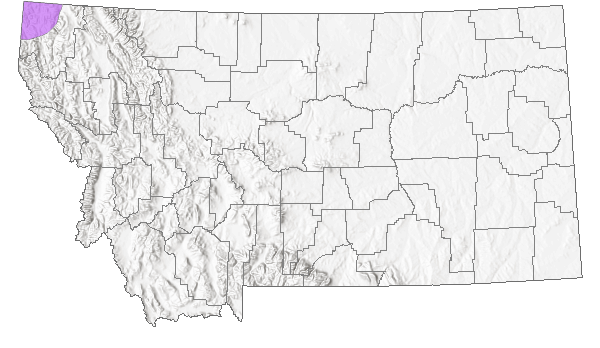
 Native
Native
Range Comments
BC to MT south to CA. Known from Lincoln County (Lesica et al. 2012. Manual of Montana Vascular Plants. BRIT Press. Fort Worth, TX).
Observations in Montana Natural Heritage Program Database
Number of Observations: 12
(Click on the following maps and charts to see full sized version)
Map Help and Descriptions
Relative Density

Recency
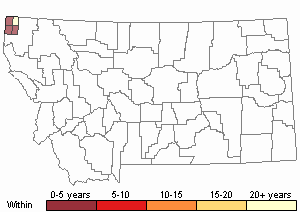
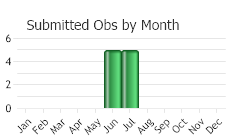
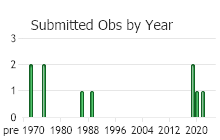
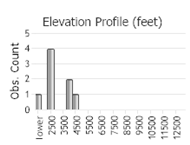 (Observations spanning multiple months or years are excluded from time charts)
(Observations spanning multiple months or years are excluded from time charts)
Habitat
National Vegetation Classification System Groups Associated with this Species
Forest and Woodland
Montane - Subalpine Forest and Woodland
Stewardship Responsibility
Threats or Limiting Factors
STATE THREAT SCORE REASON
Threat impact not assigned because threats are not known (MTNHP Threat Assessment 2021).
References
- Literature Cited AboveLegend:
 View Online Publication
View Online Publication Douglas, G.W., D. Meidinger, and J. Pojar, editors. 2001. The Illustrated Flora of British Columbia. Volume 6. Monocotyledons (Acoraceae through Najadaceae). British Columbia Ministry of Environment, Lands and Parks and British Columbia Ministry of Forests, Victoria.
Douglas, G.W., D. Meidinger, and J. Pojar, editors. 2001. The Illustrated Flora of British Columbia. Volume 6. Monocotyledons (Acoraceae through Najadaceae). British Columbia Ministry of Environment, Lands and Parks and British Columbia Ministry of Forests, Victoria. Lesica, P., M.T. Lavin, and P.F. Stickney. 2012. Manual of Montana Vascular Plants. Fort Worth, TX: BRIT Press. viii + 771 p.
Lesica, P., M.T. Lavin, and P.F. Stickney. 2012. Manual of Montana Vascular Plants. Fort Worth, TX: BRIT Press. viii + 771 p. MTNHP Threat Assessment. 2021. State Threat Score Assignment and Assessment of Reported Threats from 2006 to 2021 for State-listed Vascular Plants. Botany Program, Montana Natural Heritage Program, Helena, Montana.
MTNHP Threat Assessment. 2021. State Threat Score Assignment and Assessment of Reported Threats from 2006 to 2021 for State-listed Vascular Plants. Botany Program, Montana Natural Heritage Program, Helena, Montana.
- Additional ReferencesLegend:
 View Online Publication
View Online Publication
Do you know of a citation we're missing? Lesica, P., M.T. Lavin, and P.F. Stickney. 2022. Manual of Montana Vascular Plants, Second Edition. Fort Worth, TX: BRIT Press. viii + 779 p.
Lesica, P., M.T. Lavin, and P.F. Stickney. 2022. Manual of Montana Vascular Plants, Second Edition. Fort Worth, TX: BRIT Press. viii + 779 p.
- Web Search Engines for Articles on "Columbia Lily"





